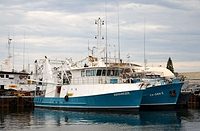Safeguarding Wind Turbine Blades with Polymeric Technology Supports a Net-Zero Future

Fast, in-situ application of leading edge repair and protection solution. Photos courtesy of Belzona.

2-part leading edge protection coating being applied in situ at a wind farm. Photos courtesy of Belzona.

Belzona 5711 cartridge packaging facilitates a fast and simple application procedure. Photos courtesy of Belzona.

Polymeric repair and protection systems support a net-zero future for the planet. Photos courtesy of Belzona.




According to the 2021 State of Climate Action Report, authored by climate analysis coalition Climate Action Tracker (CAT), in order to meet the Paris Agreement’s net-zero by 2050 target, the share of wind and solar energy in electricity generation needs to increase from 7.03% (based on 2018 figures) to 37-72% by 2030. By 2050, the share needs to rise further to 80-82%. This means that by 2050, wind and solar electricity generation needs to increase by between 72.97-74.7%. In order to support this seismic growth, leading edge repair and protection systems play a critical role in extending the lifespan of wind turbine blades and, therefore, supporting a net-zero future for the planet.
New Thixotropic Paste Repair System Builds on Success of Leading Edge Protection (LEP) Coating
Leading edge damage is recognized as the single largest maintenance problem within the wind power industry. Evidence suggests that damage to the leading edge can lower the AEP (Annual Energy Production) of a wind turbine, with energy losses estimated at between 4% and 20% if the erosion damage is severe. A turbine blade coating provides a quick and straightforward means of protecting leading edges in situ.
Now, building on this knowledge and experience in the field, a thixotropic paste has been developed–Belzona 5711 – to be applied in conjunction with the protective coating. This solvent-free, 2-part repair paste is specially formulated for the in-situ repair and rebuilding of leading edge erosion and impact damage on wind turbine blades.
New Leading Edge Repair Paste Facilitates Fast Turnaround Time
Commenting on Belzona’s new polymeric solution for the wind industry, Jason Horn, research and development manager, said, “Whilst offering rapid cure, Belzona 5711 also has a good working life, which allows for the material to be perfectly contoured/formed to the leading edge of the blade. This removes the need for sanding, therefore, eliminating a step in the repair process and simplifying the application.”
He continued, “Belzona 5711 cures quickly and can be directly overcoated with Belzona 5721 in as little as 30 minutes at 20 °C/68 °F – without the need for any additional preparation. At the same temperature, Belzona 5721 will be fully cured within five hours, allowing the turbine to be returned to service in the same day.”
He concluded, “With the combination of Belzona 5711 and Belzona 5721, the balance between usability and rapid return-to-service makes the products ideal for in-situ repair across a broad application temperature range. The long shelf-life also makes Belzona an ideal stocking material for wind turbine maintenance.”
Repair Not Replace: Leading Edge Repair and Protection System Supports a Circular Economy
According to the European Wind Energy Association, the estimated lifespan of a wind turbine is typically 20-25 years. Environmental factors, such as weathering, lightning, icing, birds, and insect collisions, can seriously limit this lifespan. In addition, there is evidence that damage to the leading edges of a turbine blade can lower the annual energy production, with energy losses that range between 4 to 20% when the damage is severe.
By investing in a high-performance leading edge repair and protection system, asset owners can protect wind turbine blades against the environmental damage outlined above. In doing so, polymeric systems support a circular economic strategy as this technology helps to extend the lifespan of wind turbine blades. In turn, this reduces the demand for blades to be manufactured and, eventually, disposed of. Therefore, by giving the blades a new lease of life in this way, the combination of leading edge protective coatings and thixotropic paste will help towards mitigating the carbon footprint of the wind power industry. In addition, by bypassing the expensive process of both replacing and disposing of damaged blades, asset owners will be able to make significant financial savings as well.
For more information, visit: www.belzona.com.
Looking for a reprint of this article?
From high-res PDFs to custom plaques, order your copy today!










